What could be simpler than understanding the design of the row house? I had a chance to take a walk through two of Philadelphia’s neighborhoods – Society Hill and South Philadelphia – and I started thinking about some of the changes to the iconic row house.
Dictionaries define a row house as being “one of a row of houses having uniform or nearly uniform plans, fenestration and architectural elements with shared sidewalls.” The term itself brings to mind rows of near identical brick houses filling working class neighborhoods in large and small cities.
As a preservationist and general enthusiast of old places, I have certain views about what changes are appropriate for a traditional streetscape and which architectural features should be retained during rehabilitation. All those notions have been turned upside down as I have seen the rather surprising new developments in row house design, especially in the hot urban housing market of Philadelphia.
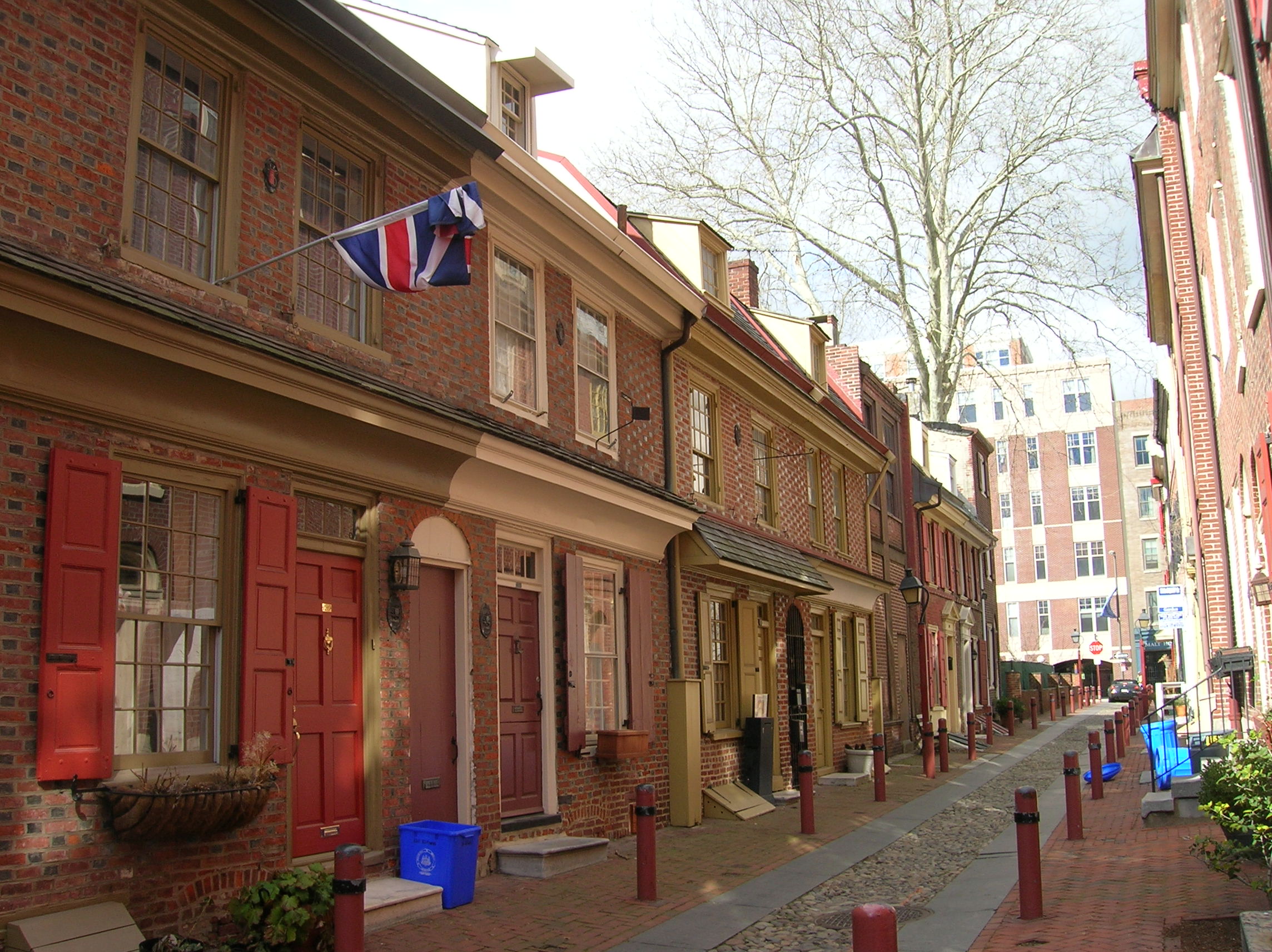
Early Philadelphia row houses on Elfreth’s Alley , photo courtesy of Carol Ingald/Philadelphia Historical Commission.
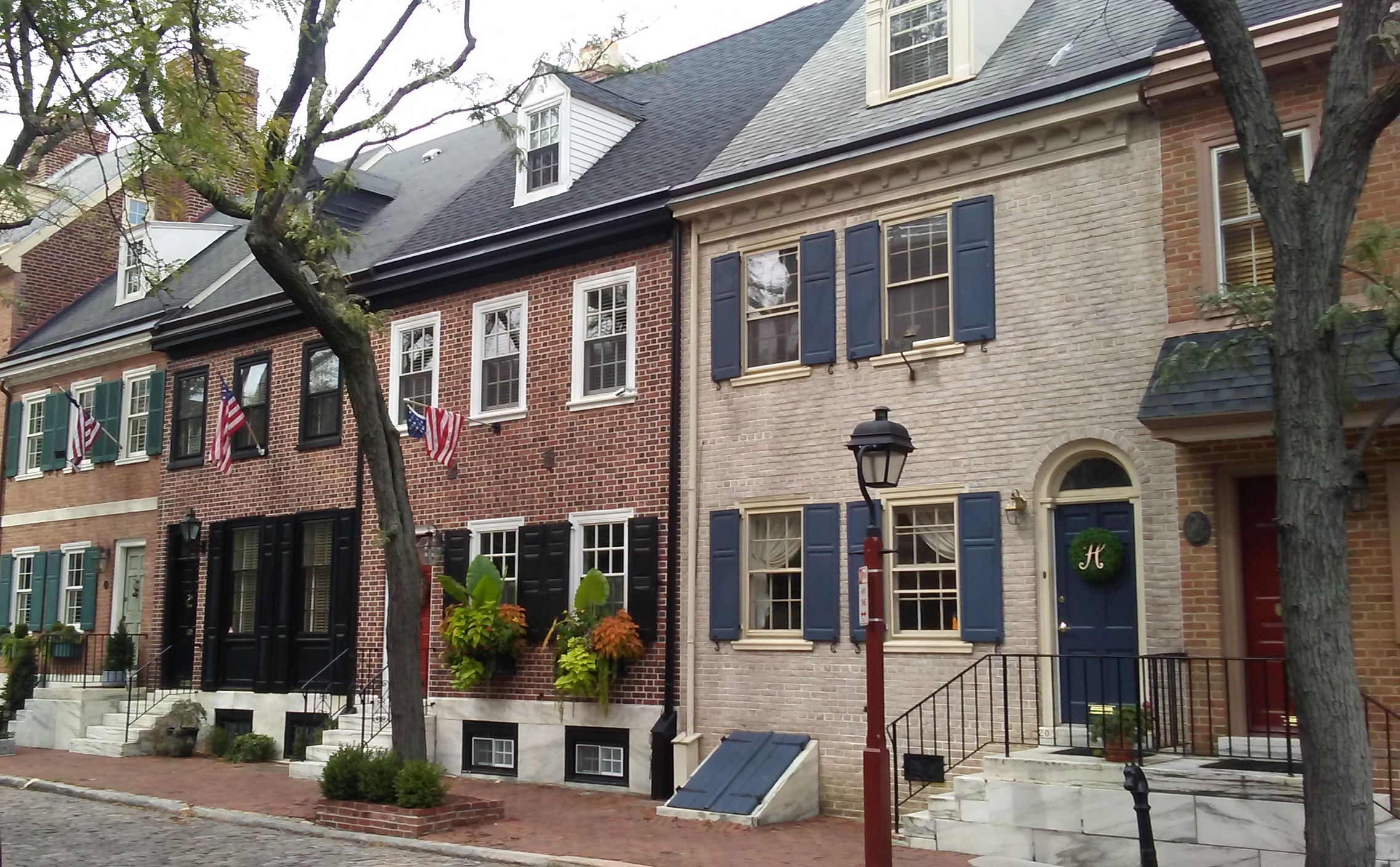
Early row houses along Delancey Street in Society Hill.
Substantial reinvestment in row house neighborhoods can mean major changes in appearance from extensive rehabilitation or new construction. Unless construction projects are subject to State Historic Preservation Office (SHPO) review due to use of federal or state funds or permits or local review by a historic architectural review board, they need only meet code and zoning requirements.
Consequently, many row houses have been redesigned in sometimes unexpected ways, using stylistic details, materials and forms very different from the original neighborhood design. While the current trends favoring city living have encouraged a wave of row house renovations and new infill construction, the updating of these homes to reflect popular tastes is hardly something new.
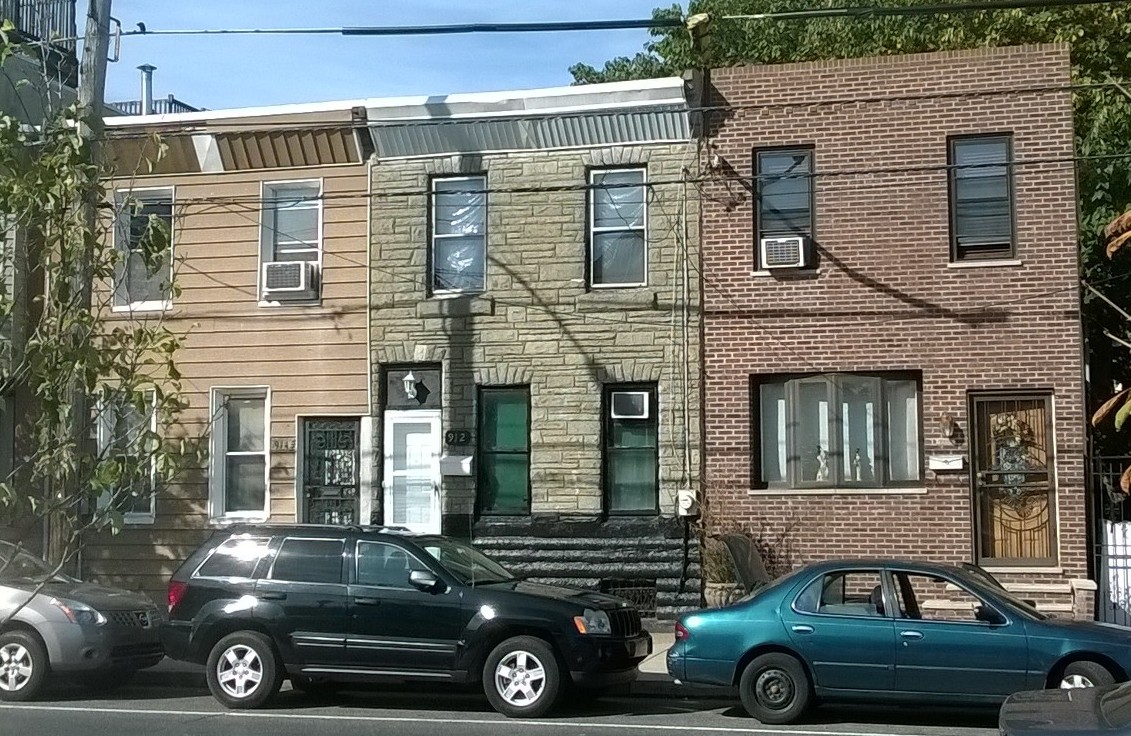
Mid-20th century modernized row houses in South Philadelphia.
In the mid-20th century homeowners applied “Perma-stone” or “Form-stone” (a formed concrete faux stone surface material), aluminum siding and vinyl siding to the exterior walls of their homes, often obliterating the original cornice, window and door surrounds or fenestration pattern. Such individual “modernization” efforts can impact the visual unity of the historic neighborhood by reducing architectural integrity, which is an important component of historic district designation.
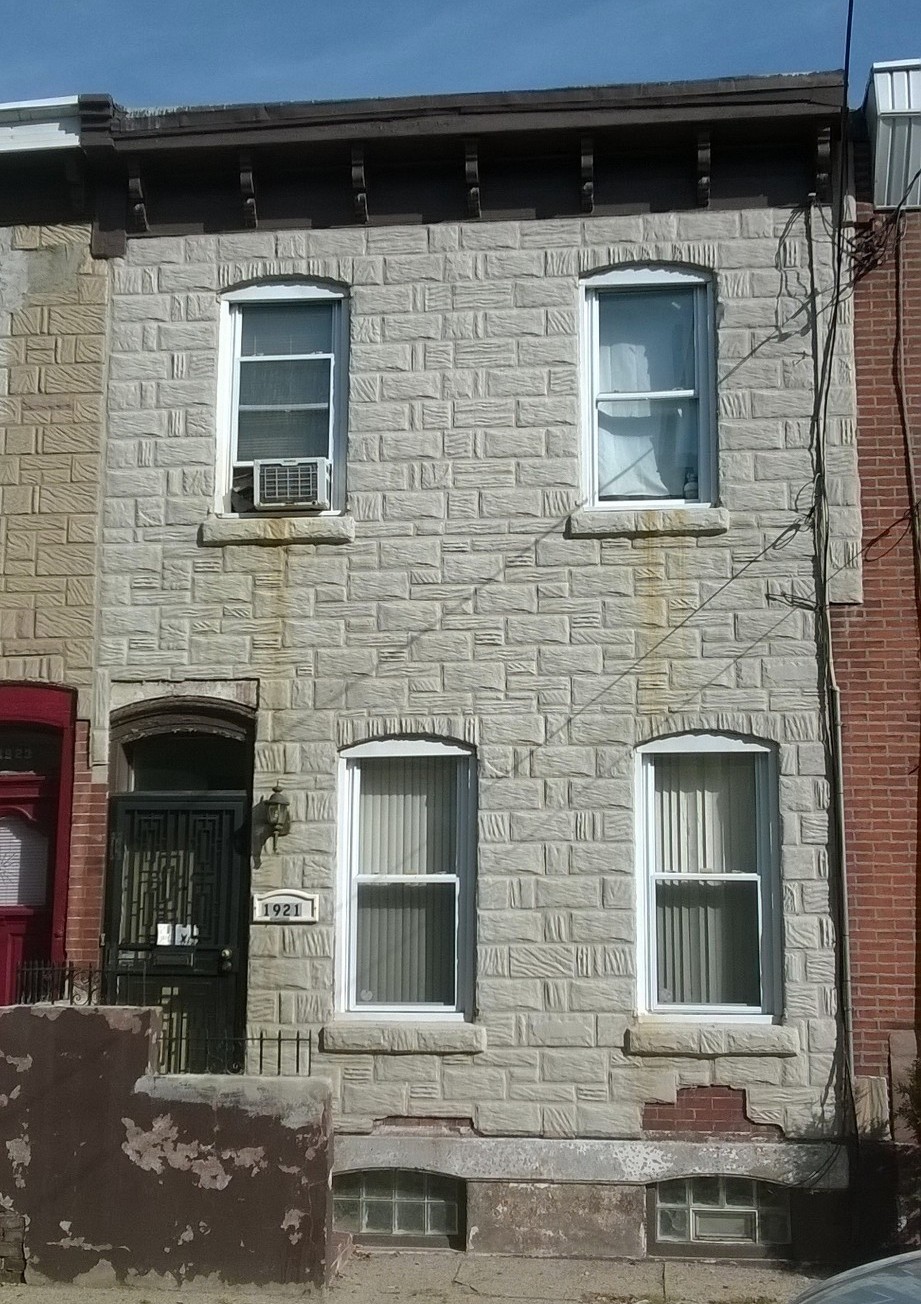
Perma-stone front façade in South Philadelphia.
Adapting row house neighborhoods to accommodate the abundance of cars has been a struggle as well, since narrow streets were not designed for that purpose. Current trends in rethinking the row house often feature the rearrangement of space on the front facade to permit a first floor garage.
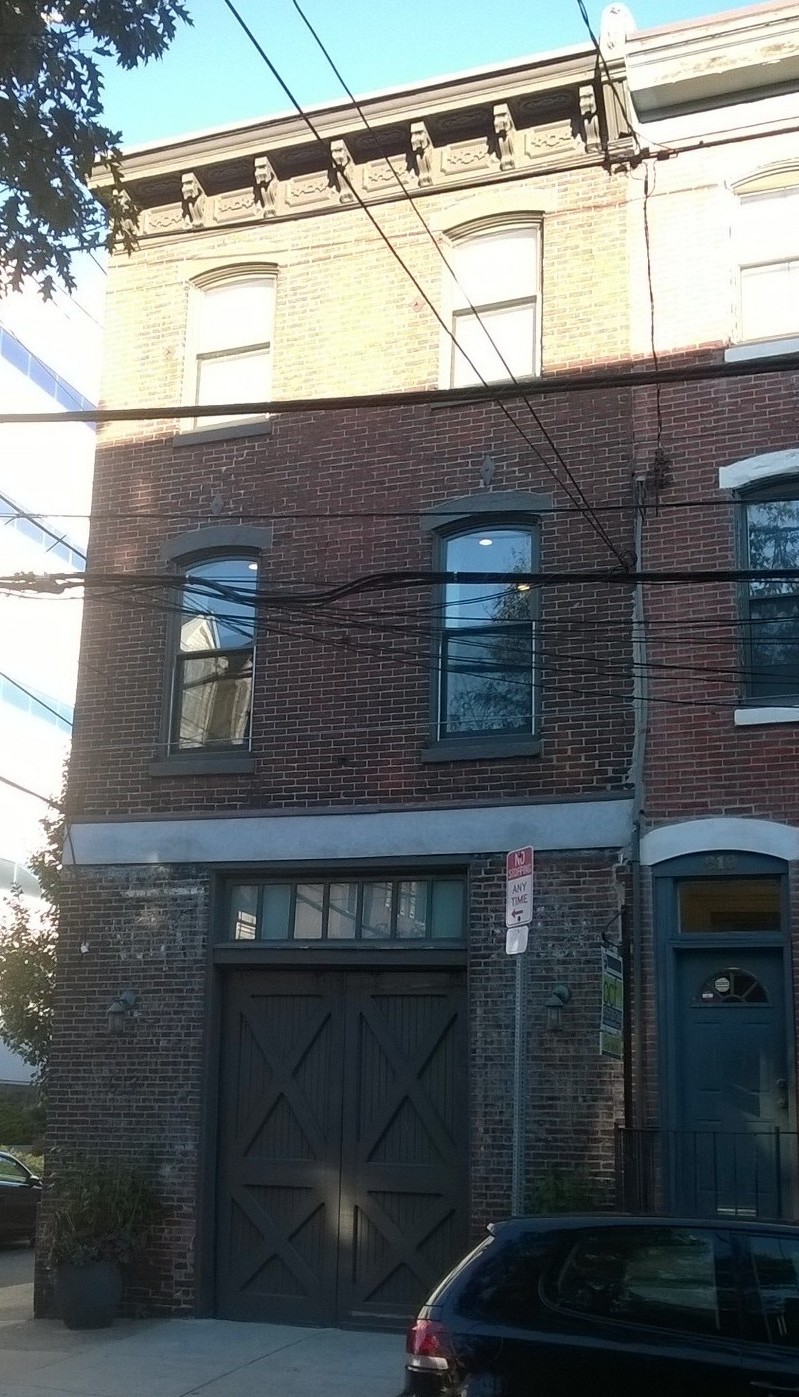
Row house with a first floor front façade garage in South Philadelphia.
When new construction is proposed for historic neighborhoods, principles of compatibility of form, massing, setback, fenestration and materials are used as guidelines. However, preservationist theory also supports the idea that new infill construction should look distinctly different from surrounding historic buildings to possess an authentic architectural character “of its own time” rather than reproducing traditional patterns. Not all agree with the outcome of such efforts, but none could deny the creation of a more complex and visually varied streetscape.
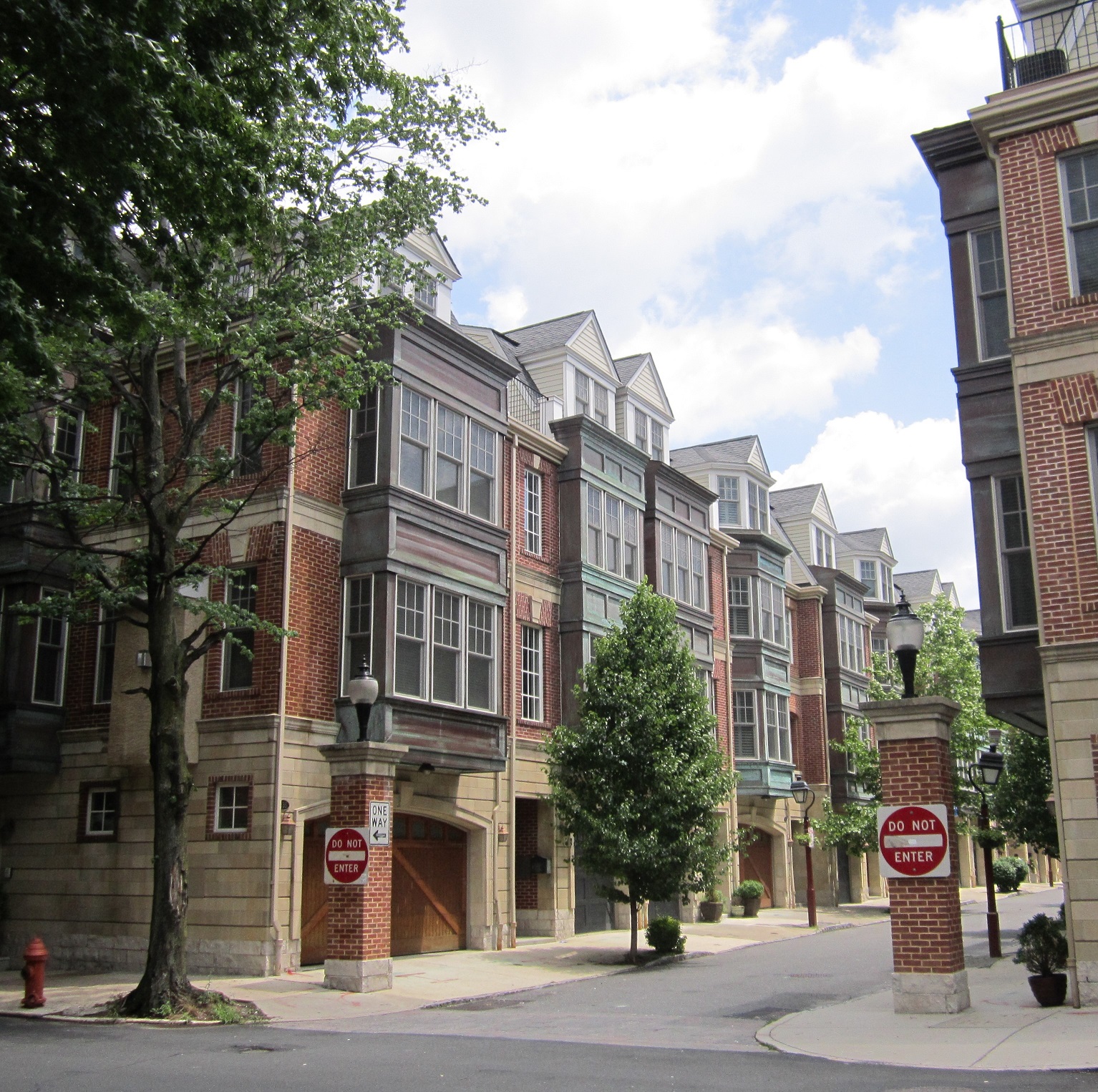
Traditionally designed infill row houses in Society Hill.
Historically, all row houses were certainly not created equal. In upscale neighborhoods townhouses were spacious and featured a wide variety of decorative architectural details inside and out. Along narrower streets (sometimes in alleys just behind grander houses), homes of humble design and narrow width prevailed. Along the alleys of Philadelphia’s oldest neighborhoods small row homes of only three rooms stacked to form three stories known as “trinity houses “ (so named for the Christian Holy Trinity) can be found. These low-cost workers homes are usually less than 1000 square feet in total with each floor containing only one room joined by a corner winding stair.
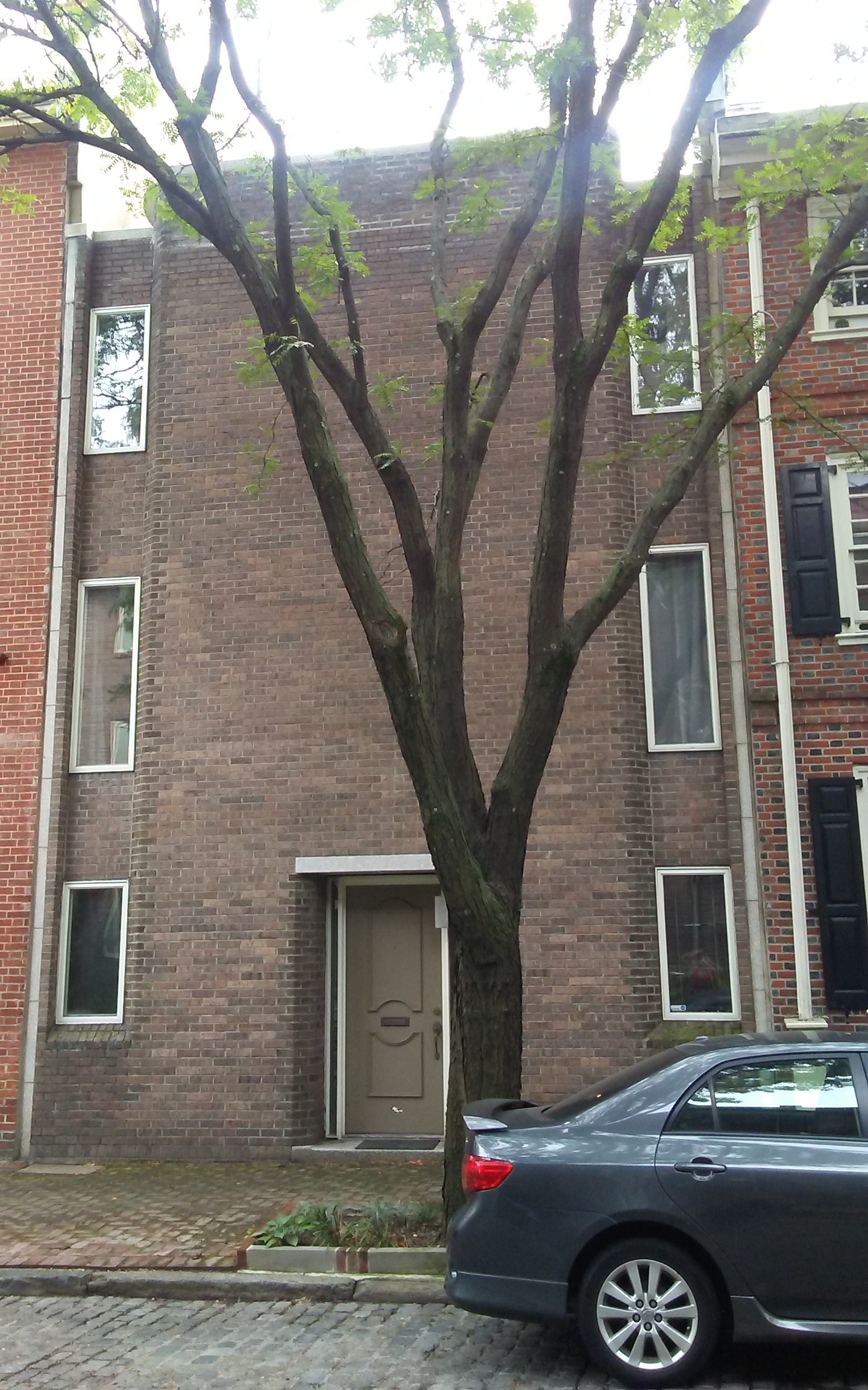
Non-traditional infill housing in a historic row house streetscape on Delancey Street in Society Hill.
So, as new construction comes to established neighborhoods, size and scale are important elements in streetscape design. While some variation is expected and even desirable, supersized new buildings can dwarf the earlier neighboring housing stock. However, given the space limitations of some old row houses, the only way to provide the necessary modern amenities may mean adding an additional story to the building.
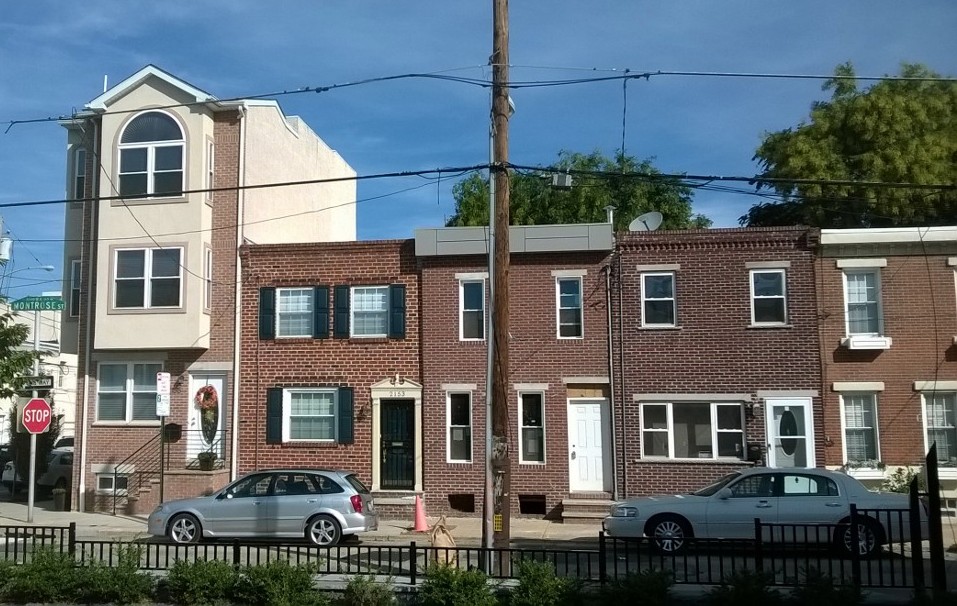
New corner row house on Montrose Street in South Philadelphia.
Recent approaches in new infill construction have really thought outside the box – often by creating lots of boxy shapes in new row house design. The 21st century Decoupage style (as described by Virginia McAlester’s in her updated 2013 Field Guide to American Houses) is made up of right angled boxes of various modern building materials applied to the façade to create a three dimensional quality.
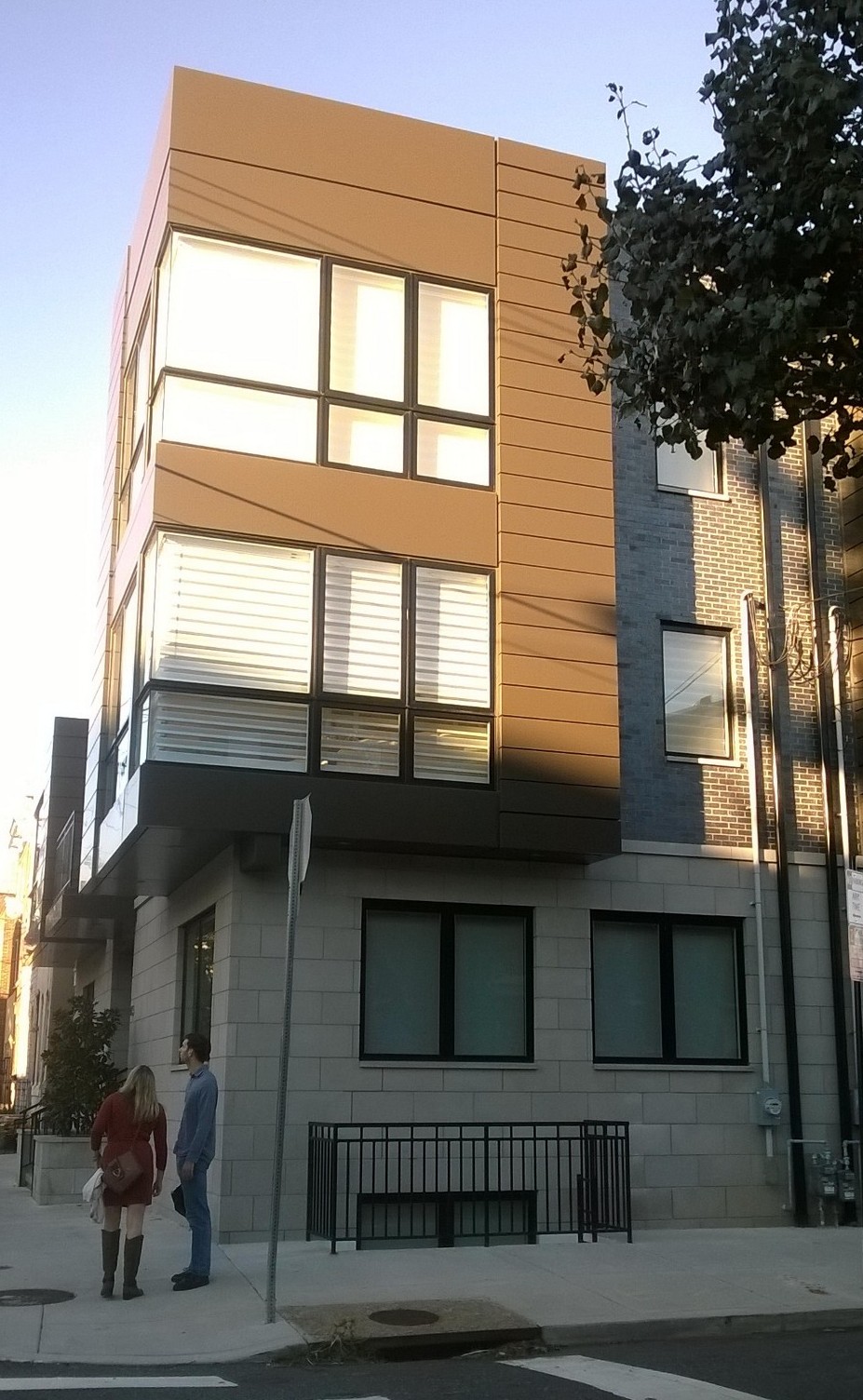
21st century Decoupage style new construction in South Philadelphia.
The row house is such an important part of Philadelphia’s character and identity that in 2008 the City, in cooperation with the National Trust for Historic Preservation, published the Philadelphia Rowhouse Manual, A Practical Guide for Homeowners, authored by Rachel Simmons Schade AIA of Schade & Bolender Architects. The guide offers an overview on the history and development of the row house in the city and tips on repair and rehabilitation to meet modern needs. It is available online at: http://www.dvrpc.org/HistoricPreservation/Tools/pdf/PCPC_rowhousemanual.pdf
Clearly, the row house has evolved far beyond the charming, yet simple and predictable design of its early days. According to the city’s Healthy Row House Project, about 70% of Philadelphia homeowners live in row houses, so this community-conscious, pedestrian-friendly architectural form is here to stay with an ever-increasing variety of embellishments like the ones shown below.
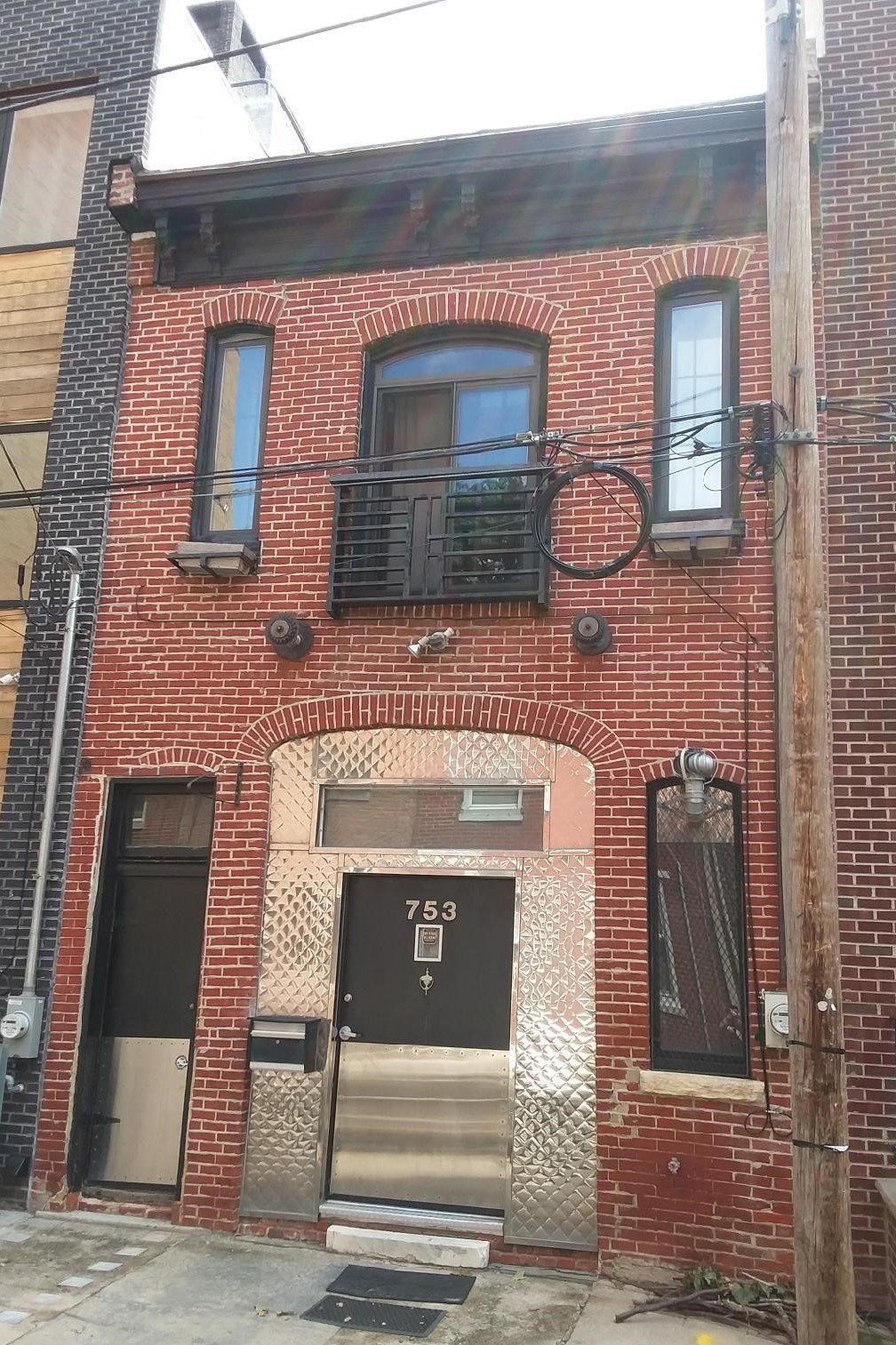
Polished metal entryway on South Mole Street in South Philadelphia.
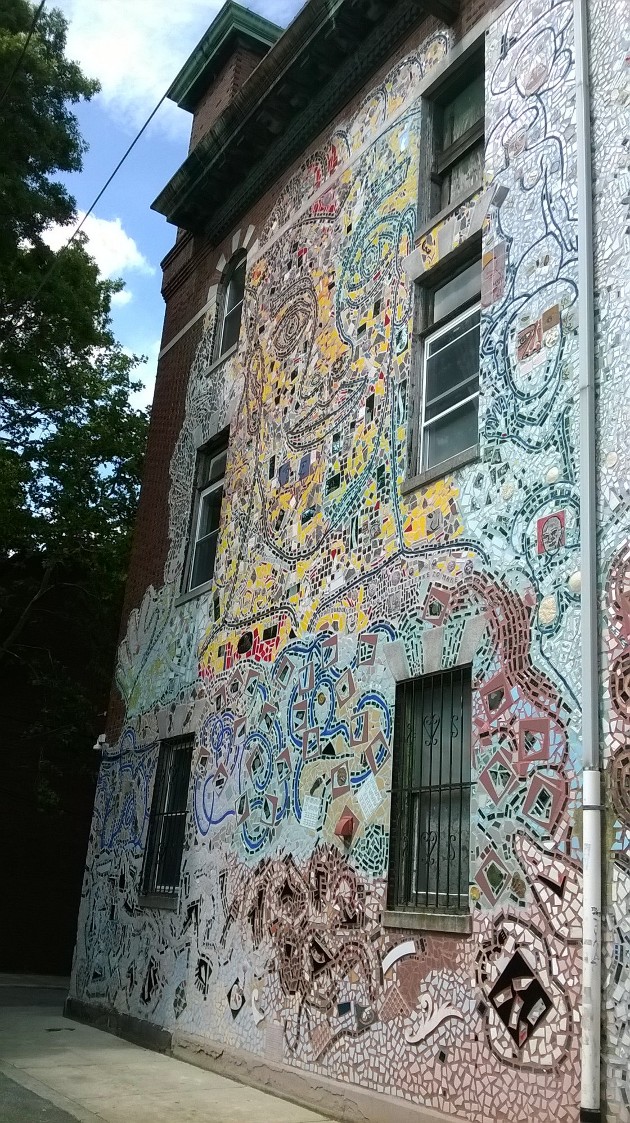
Colorful mosaic embellished row house off South Street in South Philadelphia.
Comment Policy
PHMC welcomes and encourages topic-related comments on this blog. PHMC reserves the right to remove comments that in PHMC’s discretion do not follow participation guidelines.
Commenters and Comments shall be related to the blog post topic and respectful of others who use this site.
Commenters and Comments shall not: use language that is offensive, inflammatory or provocative (this includes, but is not limited to, using profanity, obscene, or vulgar comments); disparage other commenters or people; condone illegal activity; identify the location of known or suspected archeological sites; post personal information in comments such as addresses, phone numbers, e-mail addresses or other contact details, which may relate to you or other individuals; impersonate or falsely claim to represent a person or an organization; make any commercial endorsement or promotion of any product, service or publication.
If you would like to comment on other topics not related to this blog post but related to PHMC, please fill out the PHMC Contact Us Form.
Great Article
The new developments in row house design, especially in the hot urban housing market of Philadelphia.
Instructing people to build in hideous modern styles over beautiful Traditional architecture? That led to some horrible design the past ten years or so. If anything, the opposite is true.
Thanks for a balanced look at the row house, Pam.
I am currently writing a book on the history of the American Construction Industry and would like to include an image from this article, specifically of Elfreths Alley.
Can you please extend permission or direct me to the appropriate party?
I grew up in a row home in Harrisburg PA where my parents still live. I wanted to know the history of it. Do you know how I could research this?
am currently writing a book on the history of the American Construction Industry and would like to include an image from this article, specifically of Elfreths Alley.
Can you please extend permission or direct me to the appropriate party?